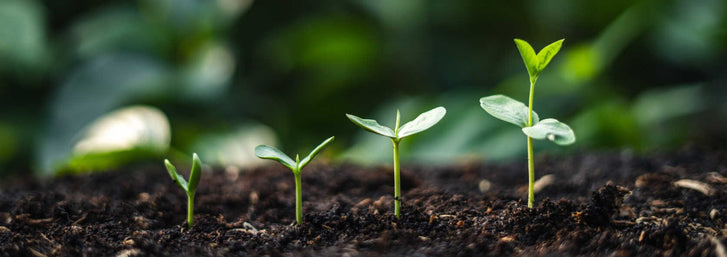
Jordan Freytag

Garden Cover Crops
So, your garden has been a success this season, showering you with snap peas and string beans and squash—oh my! Now, as the kids return to school and the weather cools, it is time to put your garden to bed. After you clean out your garden beds from leftover fruit and vegetable plants, weeds, and trellising structures, you can simply cover the beds with leaves or straw for the winter. However, after all that your garden has given to you this season, wouldn’t it be nice to give it something in return?
This fall is a great time to try out using cover crops as a way to keep your soil loose and workable, as well as putting some precious nutrients back in for the long winter. Here are some ideas for using cover crops this season:
Austrian Field Pea: Field peas are a great crop for fixing nitrogen and suppressing weeds during the cooler months. This crop is fairly cold tolerant—tolerating temperatures as low as 10 degrees. However, because they are a vining crop, they are often best paired with another cover crop that can act as a support such as Winter Rye or Triticale. Additionally, field peas break down easily and are a quick source of nitrogen when turned into the soil in the spring.
Winter Rye: As mentioned above, winter rye is a great crop to pair with field peas. Its deep roots keep the soil from becoming tightly compacted during winter and anchor the soil in place to protect against wind erosion. Also pairs well with other legumes such as hairy vetch.
Clover: Clover is another great crop for erosion and weed control. Also, used as a nitrogen fixer, clover can be mowed or grazed once established or easily turned into the soil in the spring. This crop can be planted in fall or spring to be used as a covering during the growing season for fallow beds. Used as a spring cover crop, clover is also a fabulous pollinator attractor.
Most cover crops that will be used during the winter should be planted in the fall, allowing enough time before the first frost to grow and accumulate biomass. Without sufficient time to establish roots and vegetation, cover crops will be far less effective. It is also important to turn crops into the soil at least 6 weeks before planting time in the spring—allowing enough time for plant matter to break down into the soil.
This year, Mountain Valley Seed is introducing a great new Garden Cover Crop mix for those who want to try a variety of different crops! A mix of ten different items covers all your cover crop needs; nutrient fixing, prevention against soil compaction, erosion control, to name a few.
Happy Planting!
Leave a comment
Your email address will not be published. Required fields are marked *
1 comments
Beth wenstrom
I bought three 5lb bag of garden cover crop mix sku18115 and a 10 oz bag of legume inoculant sku49396 and i cant find the instructions or correct formula for the mixture, help! Thank you
Further Reading

Reviewing the Aquatree Garden: A True Leaf Market Experience
The AquaTree Garden is an innovative growing experience! This nifty appliance allows you to grow leafy greens, microgreens, herbs, large sprouts, and vegetable starts (like tomatoes) all at once! When it comes to indoor gardening, there is no question ...

Ashleigh Smith
2024-04-225 min read1
Parasitoid Wasps: A Beneficial Insect in the Garden
Written By Lara Wadsworth There are estimated to be around one million different species of parasitic wasps worldwide. In fact, most wasps are parasitic, which means they live on or in a host at the host's expense. For common garden pests like aphids, ...

Ashleigh Smith
2024-04-226 min read0
Succession Planting: The Key to a Continual Harvest
Do you find yourself harvesting large amounts of any given vegetable from your garden all at once? There is a solution! The practice of succession planting, or planting in segments over a period of time, allows you to harvest root vegetables, leafy gre...

Ashleigh Smith
2024-04-223 min read2
10 Natives of the Southwest USA for Pest Control
Written By Lara Wadsworth The Southwestern United States is a region incredibly unique to the rest of the country. The hot, dry weather can be challenging for plants and animals to thrive without additional help. That is why gardening with natives can ...

Ashleigh Smith
2024-04-157 min read0



